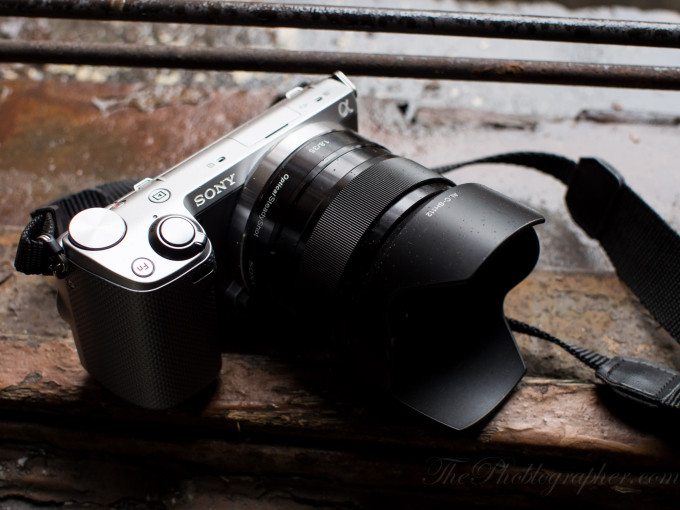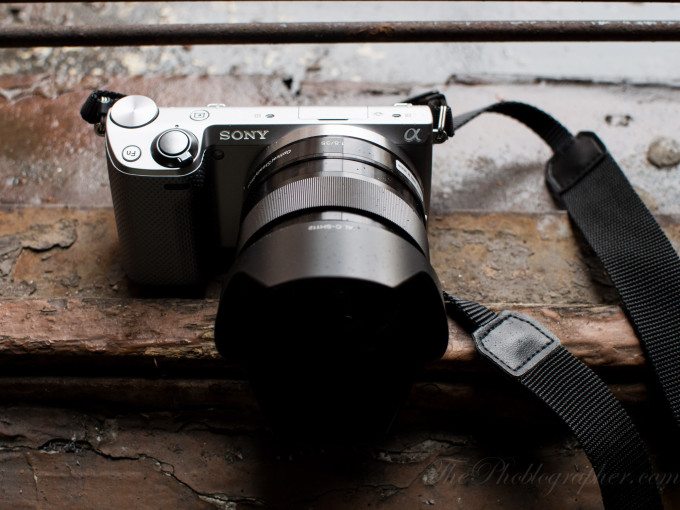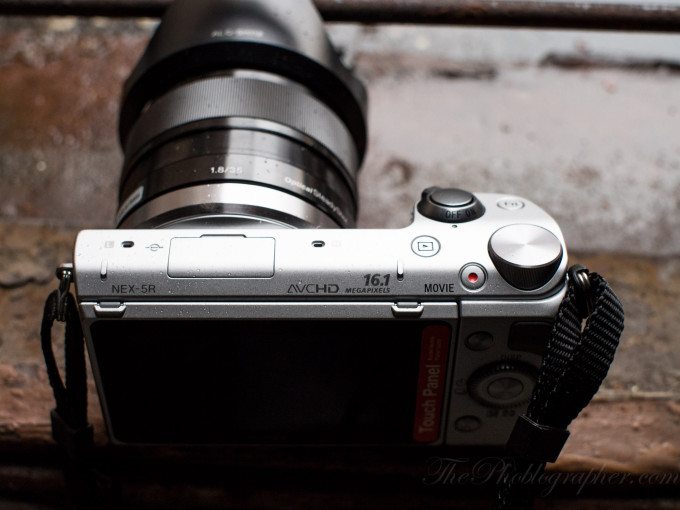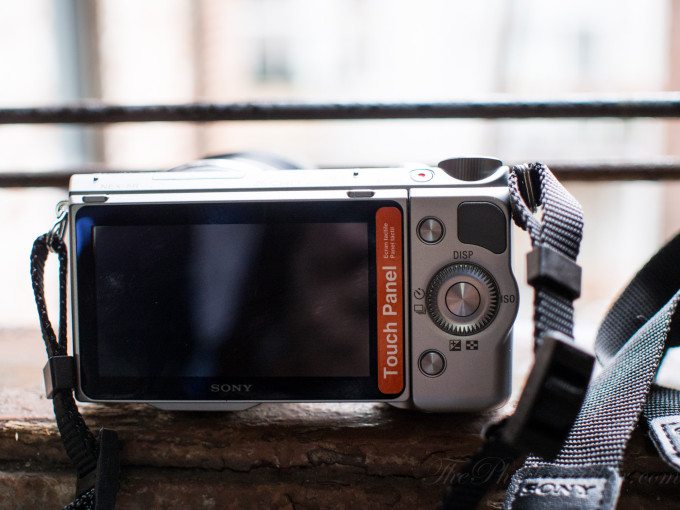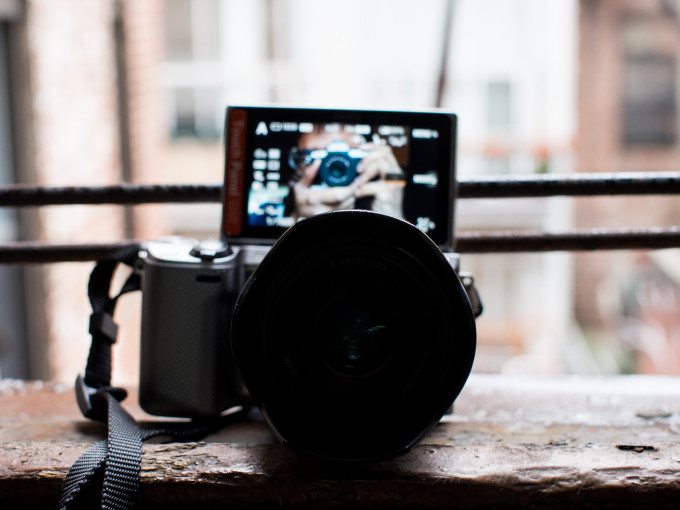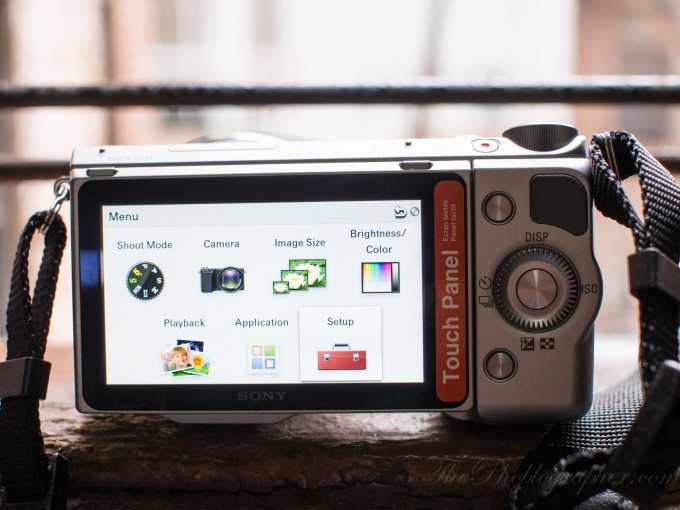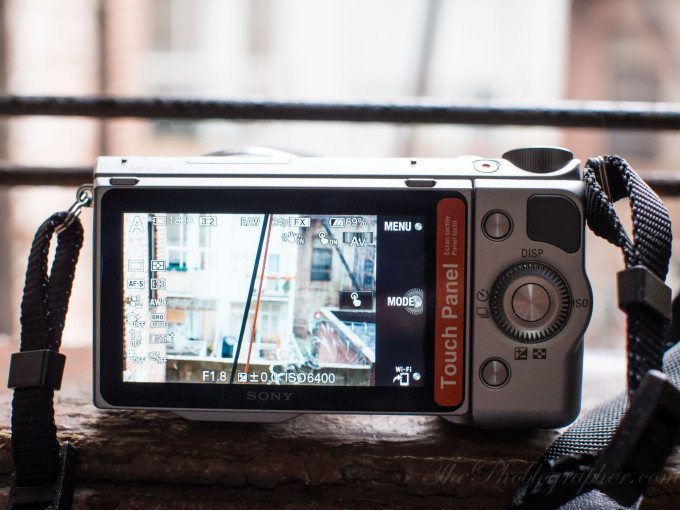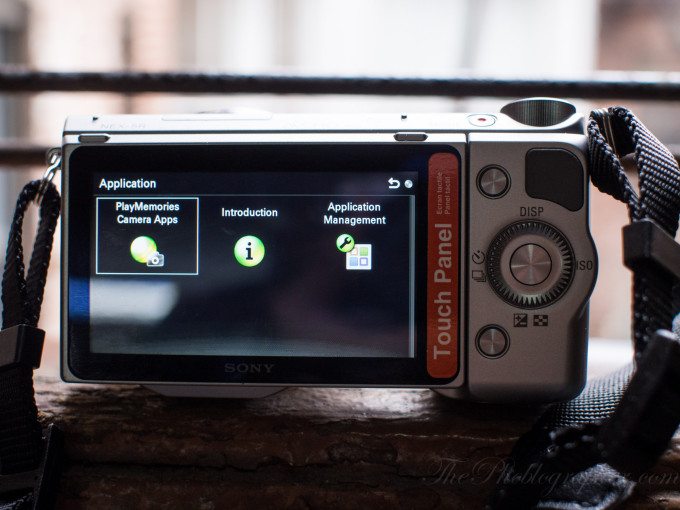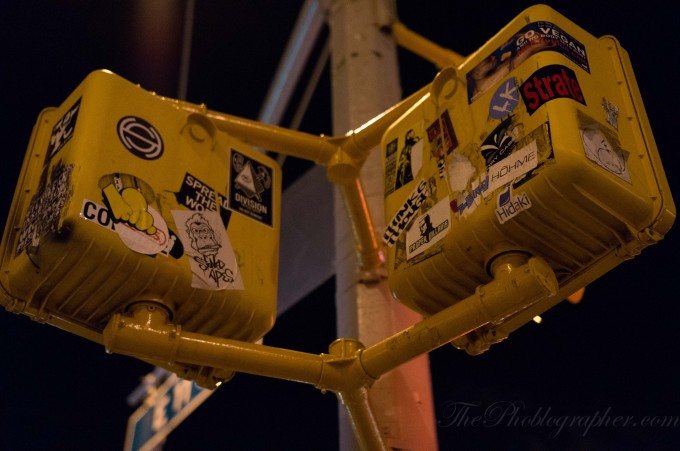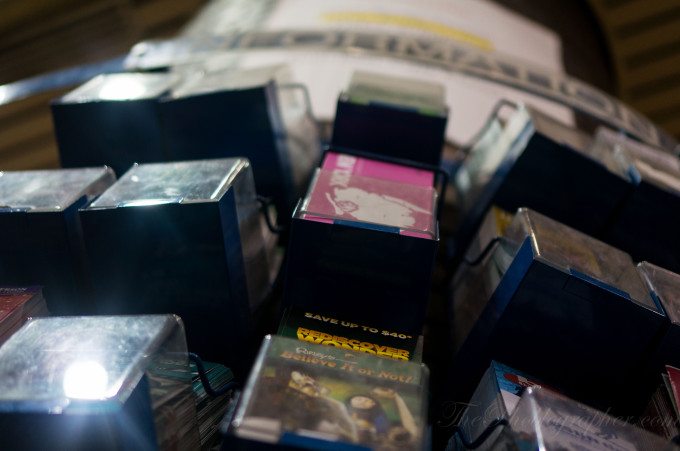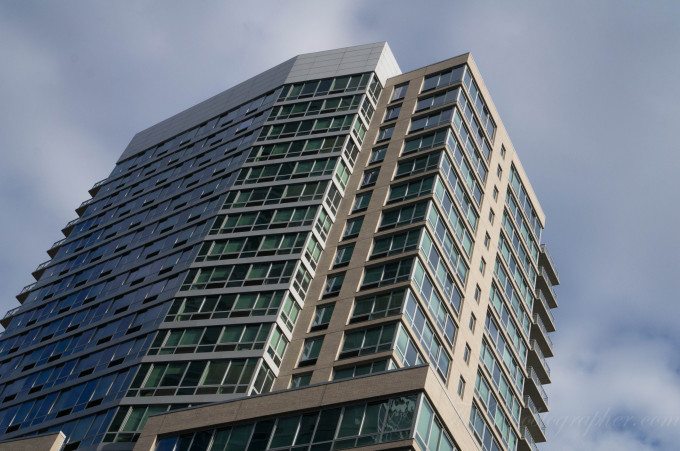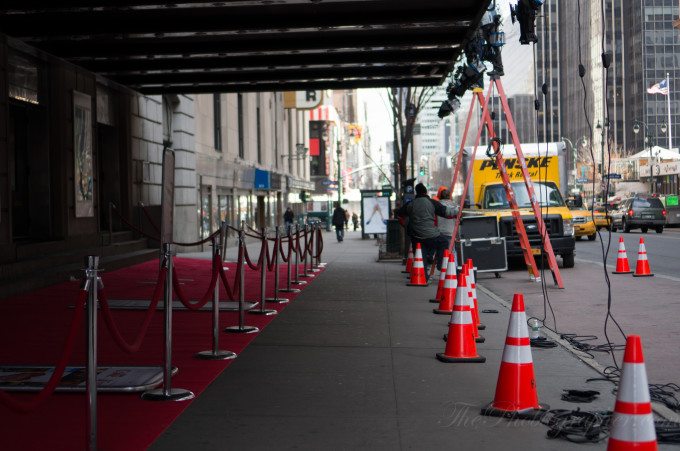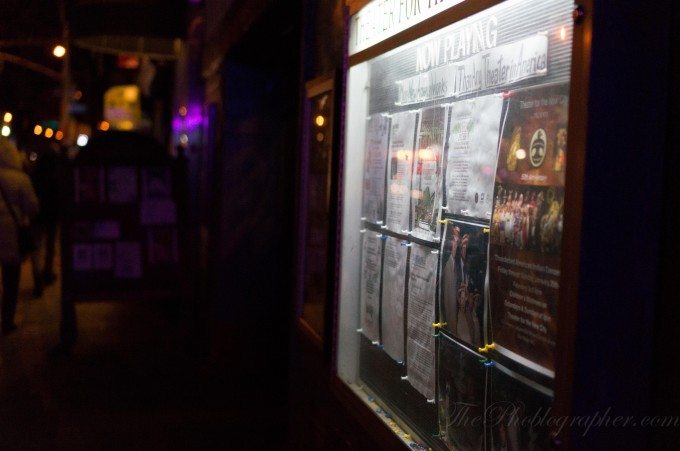Last Updated on 03/04/2013 by Chris Gampat
The NEX 5R has quite a bit to live up to. We previously reviewed its predecessor, the NEX 5N, and nearly fell in love with the camera’s image quality and small size. Indeed, Sony did an excellent job with the camera as enthusiasts, semi-professionals, and professionals in the case of the BBC picked it up. With all of this said, does the NEX 5R have what it takes to dethrone its ancestor?
Pros and Cons
Pros
– Excellent image quality
– Sony’s colors continue to be amongst the best in the business
– Fast autofocusing
– Small size makes me want to carry it everywhere while still giving me the ergonomic controls where I need it
– Once again, Sony also gives us an excellent screen
Cons
– Weird placement for a playback button
– Highly advanced users like myself still yearn for more
– No EVF
– Still using the old Sony NEX hot shoe
– The screen’s touch responsiveness wasn’t as good as other units I have tested
Gear Used
For this review, we used the Sony NEX 5R with the Rode Videomic, Rokinon 24mm T1.5 cinema lens, Sony 35mm f1.8 OSS, 18-55mm f3.5-5.6, and the IndiPro 3.5 inch EVF.
Tech Specs
Specs taken from the B&H Photo Video Pro Audio listing of the product
| AV Recording | |
|---|---|
| Video Recording | Yes, NTSC/PAL |
| Aspect Ratio | 4:3, 16:9 |
| Video Clip Length | Up to 29 Minutes |
| Audio Recording | With Video, Stereo |
| Focus Control | |
|---|---|
| Focus Type | Auto & Manual |
| Focus Mode | Single-servo AF (S), Continuous-servo AF (C), Manual Focus (M) |
| Autofocus Points | 99 1 |
| Viewfinder/Display | |
|---|---|
| Viewfinder Type | LCD Display |
| Display Screen | 3.0″ Rear Touchscreen LCD (921600) |
| Live View | Yes |
| Flash | |
|---|---|
| Flash Modes | None |
| Built-in Flash | No |
| Flash Compensation | -2 EV to +2 EV (in 1/3 EV steps) |
| External Flash Connection | Proprietary |
| Power | |
|---|---|
| Battery | 1x NP-FW50 Built-in Rechargeable Lithium-ion Battery, 7.2VDC |
| Operating/Storage Temperature | Not Specified By Manufacturer |
| Physical | |
|---|---|
| Dimensions (WxHxD) | 4.36 x 2.31 x 1.53″ / 110.8 x 58.8 x 38.9 mm |
| Weight | 7.69 oz / 218 g without battery and card |
Ergonomics
Sony’s NEX 5R took the philosophy of keeping the control layout very simple but made it only slightly more advanced with the addition of knobs that many users might find themselves using. But as far as the front of the camera goes, it is still once again a very plain vanilla philosophy. There is an infrared transmitter, a lens release button, and the grip.
The top of the camera is where one some of the main controls are that might be used. There is the On/Off switch around the shutter release, a custom Fn button next to that, the playback button, the video record button, and a knob to control the aperture setting. To the top left area of the camera lay the stereo speakers and the old NEX style hot shoe.
I’m not exactly sure why Sony decided to go with the older style, but I personally don’t take much of a liking to it. Perhaps they thought that the person getting this camera won’t use any major accessories. Indeed, when the BBC used the 5R to record a web series, the camera simply recorded the footage. All audio was captured separately.
The back of the camera was designed quite well when one takes into consideration real life use situations. There are two soft buttons, a thumb grip area, an exposure control dial, and four way controls for certain settings as well. Thankfully, the company decided to put ISO control here which makes using the more manual modes on the camera much simpler.
Next to all of these is the big, bright and beautiful touchscreen. Unfortunately, our unit’s screen wasn’t as responsive as other units we’ve played with.
And if you want, the screen can be flipped up. Sony specifically is marketing this to people who want to shoot self-portraits–affectionately known as “selfies.” In real life use though, it was worked quite well when shooting videos.
Build Quality
If you’re expecting something with truly stellar build quality, look elsewhere, and by that we mean at another system. The NEX 5R feels plasticky but not at all like it was made in China. For what it’s worth, the build quality is quite standard but it’s not perfect. With our unit, the touch screen wasn’t very responsive in the center. We tried doing a factory reset and recalibrating the screen only to learn that the central area is where most of the problems were occurring.
Ease of Use
Sony’s touchscreen makes the 5R much simpler to use and to navigate the menus. Previously, Sony’s menus were one of the worst parts of the system because the cameras were really designed for people to set to auto and forget about all of the rest. While the menus themselves are still quite long in length, I’m not sure if it’s my overall familiarity with the system or their minor tweaks that have made the camera easier to use.
What’s very nice though is the extra exposure control dials added in, which helps to make controlling the exposures to get the exact image that you want much simpler to do if you’re an advanced user.
But another awesome addition to the mix is the built-in Wifi. We tested the Sony PlayMemories app on an HTC One S and an iPad Mini. When it came to the Android phone, it would upload the image immediately and then freeze when it got to 100%. I would then need to exit the app, go to my phone’s gallery, and I’d see the image pop up in an album.
This wasn’t the case with the iPad Mini. However, the only peeve of ours is that the tablet won’t automatically connect to the camera. Instead, you need to manually do it from the iPad’s end. When the camera and tablet talk to one another though, it’s a very seamless workflow with the app not freezing up at all.
To date, this is the most consumer friendly version of WiFi image sharing that we’ve seen.
Autofocusing
The NEX 5R (or at least our version) focuses fastest when the hard keys are pressed vs using the touchscreen. Overall though, the camera system still can’t keep up with Olympus’s focusing speed. We tried this for both moving subjects and stagnant subjects, and it worked best when subjects were still. During our first impressions preview of the 35mm f1.8 OSS, we found that the focusing was also much smarter than it has been before. That is to say that it focuses on the subject you actually want to be focused on based on composition.
Focusing in low light and low contrast areas were problematic for the NEX 5R–but we also experienced that with the NEX 6, though not so much with the NEX 7.
Image Quality
The Sony NEX 5R houses a revamped 16.1MP CMOS APS-C sized sensor–and it kicks some major ass. We tested the files in Adobe Lightroom 4 and Capture One Pro 7. We found that getting the colors that you really want is simpler to do in Capture One, but that the overall workability was simpler in Lightroom 4. Like the NEX 7 before it, the images have very punchy detail to them, a wonderful sharpness, excellent high ISO noise results, and lots of leeway to get the image that you want.
But when it came to video, that’s when things started to get a bit more hairy.
RAW File Versatility
For most of our editing, we put the images through Adobe Lightroom 4. In the situations where an image didn’t have enough detail in the shadows or in the highlights (and it is very possible to get both if you really try) we were able to save the images without making them look like an HDR.
When doing a process like this, one can often create extra image noise that isn’t always wanted. We didn’t see very much, and any that was created was easily removed in Lightroom.
Sony’s new sensor is capable of creating HDR files from a single file–which many HDR fanatics will appreciate and love.
When it came to shooting portraits, we really wish that the NEX 5R had a bit more megapixels as editing images with more pixel area usually lens to making retouching much simpler.
High ISO Results
At ISO 3200 and 6400, we saw the NEX 5R hold its own with the competition quite well. Once it went over that limit though, we started seeing lots of chrome noise, color noise, and banding that didn’t even always look good when the files were converted to black and white.
To be fair, if you’re using a fast lens with this camera you should almost never need to over over 6400 ISO.
Video Quality
We shot two videos with the Sony NEX 5R and the Rokinon 24mm T1.5. While we know for a fact that the lens is incredibly sharp, the footage itself just wasn’t. My 5D Mk II footage looks slightly sharper–and that’s saying something considering that the technology in the 5R is still light years ahead in many ways. Additionally, the NEX 5R has an option of doing 1080p out via HDMI. So when I hooked it up to an IndiPro EVF, focusing and shooting became somewhat easier except that Sony’s Peaking couldn’t be seen through the EVF.
Here are the videos that we shot.
Extra Image Samples
Conclusions
The Sony NEX 5R is really an excellent camera for the enthusiast. If you’re an advanced user, we would recommend stepping up to the NEX 6 or 7 instead. To date, I still believe that the NEX 7 is still the best in the series despite being bashed by other blogs. The 5R has a simpler interface due to the touchscreen (providing your unit’s screen works perfectly). It also has very fast focusing capabilities, WiFi connectivity built in, and ergonomic exposure control dials that make shooting a breeze. But for the life of me, I can’t figure out why Sony put the old hot shoe on when I could have easily mounted an external EVF with a standard hot shoe foot on top of the camera and shot more video with it.
The images that come from this camera aren’t as good as Fujifilm’s X series APS-C cameras, but they do outpace the likes of Olympus and Panasonic’s Micro Four Thirds options.
In the end though, Sony has almost shot themselves in the foot with the creation of the NEX 6 and the 3N below the 5R. It almost has middle child syndrome.
Please Support The Phoblographer
We love to bring you guys the latest and greatest news and gear related stuff. However, we can’t keep doing that unless we have your continued support. If you would like to purchase any of the items mentioned, please do so by clicking our links first and then purchasing the items as we then get a small portion of the sale to help run the website.


